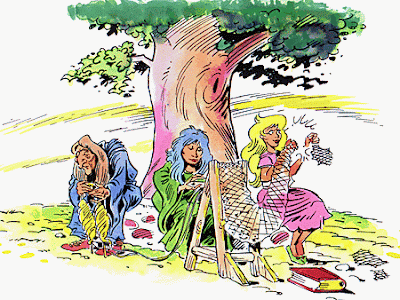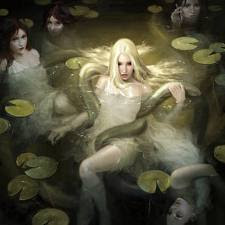La Festa de Sant Medir - Fiesta de San Medir is an annual festival every 3rd March in Vila de Gracia area of the Gracia district of Barcelona. It is fondly known as the "La festa més dolça" - "the Sweetest Festival" because of the 100 tons of sweets that are given away every year during the colourful Sant Medir parade. There are various activities, but the biggest event is the evening parade through Gracia. The parade groups (colles) gather on various streets in the "Vila de Gracia" area, the old part of Gracia, then join the procession of horses, carts and lorries down Gran de Gracia to the "Jardinets de Gracia" - "little gardens of Grácia." This is the open area between at the top end of Passeig de Grácia after Av. Diagonal and before Gran de Gracia starts. The evening finishes with a fireworks display. Find parade information links further down this page.
The legend of the Festa de Sant Medir or Sant Emeriterio in Spanish, is about a farmer who became a Catholic Saint in Roman times during the persecution of Christians.
The modern day festival started in 1830 when a baker called Josep Vidal i Granés, who lived in the newly opened street Gran de Gracia. He fell very ill one year and vowed that God would cure him, he would make a annual pilgrimage to the hermitage of his patron saint, Sant Medir.
The hermitage still stands just outside Barcelona on the way to Sant Cugat, where Josep Vidal was originally from. To make public his pilgrimage he would bang a drum and hand out sweets. This was very festive and every year more and more friends and neighbours joined him and this became the first "colla" of the Sant Medir festival. A "colla" is the Catalan name for a group or club.
Today there are thirty "colles" who participate and organise the annual event in the assocation called "La Federació de Colles de Sant Medir" - "the Confederation of Sant Medir Colles." The confederation was formed in 1926.
The legend of the Festa de Sant Medir or Sant Emeriterio in Spanish
This popular tradition comes from an important legend that has been passed on from one generation to another. The legend is situated approximately in 300 after Christ and talks about a young peasant called Medir, who lived in a small town near to Barcelona during the Roman Empire of Diocletian. This emperor persecuted fiercely the Christian congregation and ordered to capture the bishop Severe.
The bishop Severe escaped and run away to Sant Cugat. In the way he found the young peasant Medir, who was planting broad beans and who wanted to help the bishop because of his own beliefs. But the bishop told him that the most important is faith and truth and that the peasant should not lie if anyone asked him about Severe.
Soldiers passed by the place where Medir was planting broad beans and asked to him about the bishop. Medir followed the bishop’s advice and said to the soldiers that he saw the bishop to run away while he was planting broad beans, and added that the soldiers could find the fugitive if they went along the road.
As soon as Medir told the truth, a miracle happened: the broad beans that Medir had just planted grew up suddenly and flowered very quickly. Frightened by this event, the soldiers captured Medir and martyred him and the bishop, who was also captured a little bit later.
From then on, when people celebrate Sant Medir, they throw candies and sweets which symbolise the broad beans, for reminding everybody the miracle.
Soldiers passed by the place where Medir was planting broad beans and asked to him about the bishop. Medir followed the bishop’s advice and said to the soldiers that he saw the bishop to run away while he was planting broad beans, and added that the soldiers could find the fugitive if they went along the road.
As soon as Medir told the truth, a miracle happened: the broad beans that Medir had just planted grew up suddenly and flowered very quickly. Frightened by this event, the soldiers captured Medir and martyred him and the bishop, who was also captured a little bit later.
From then on, when people celebrate Sant Medir, they throw candies and sweets which symbolise the broad beans, for reminding everybody the miracle.



















































